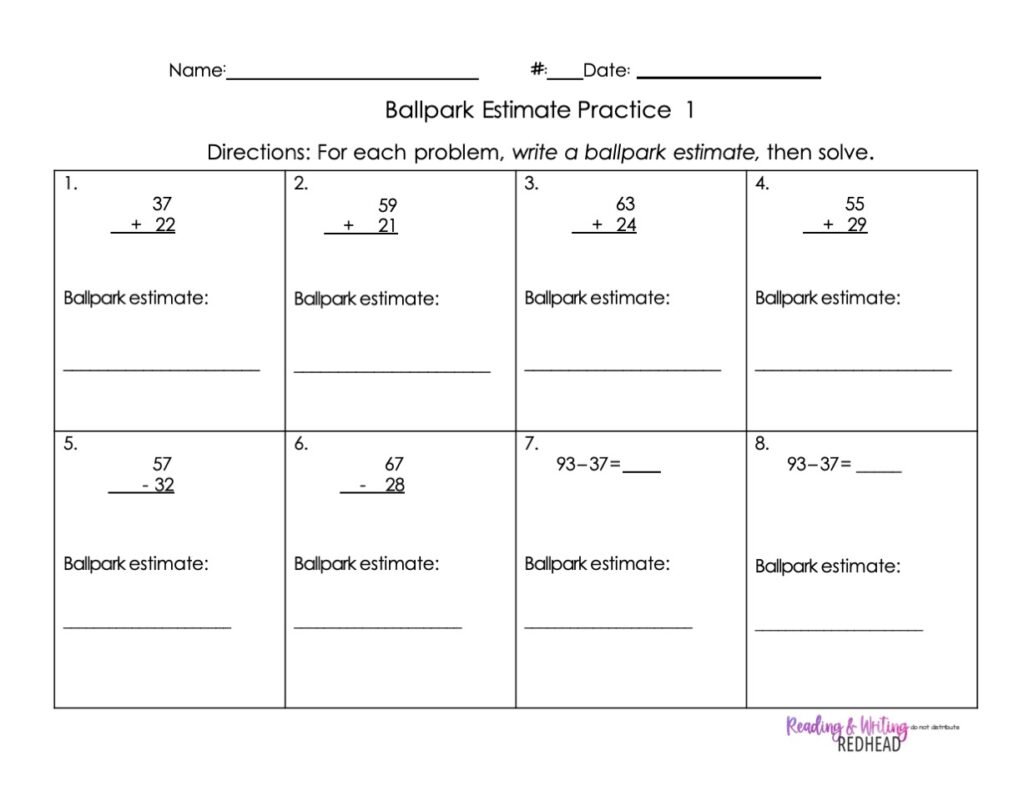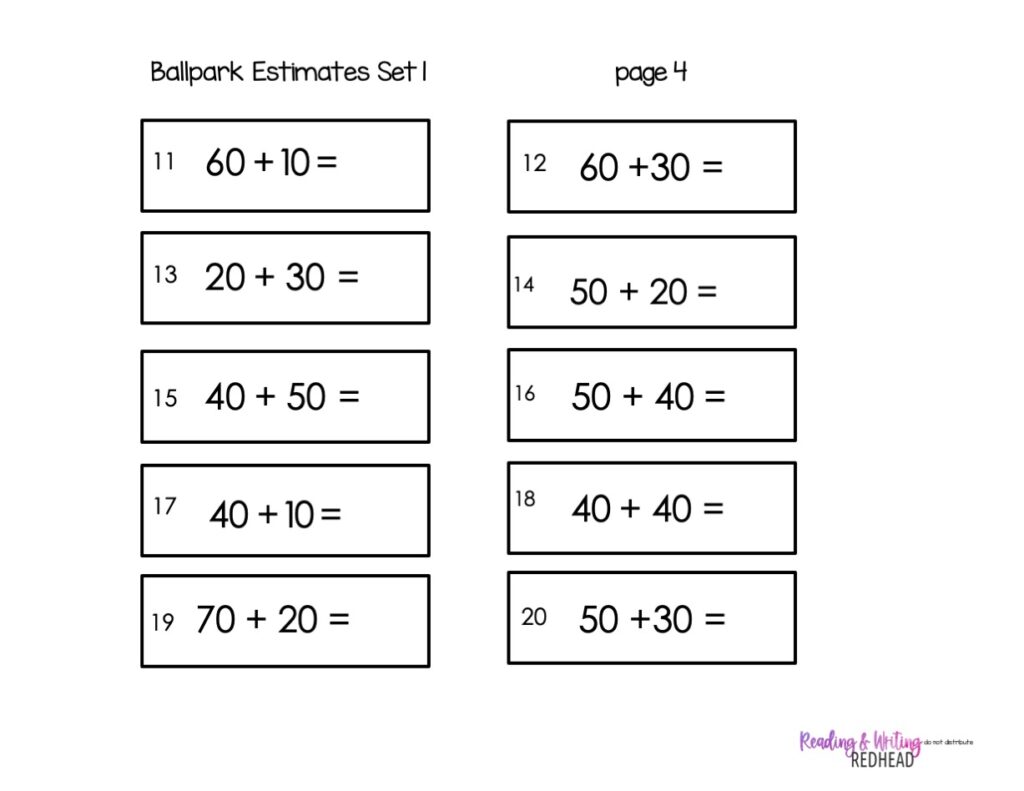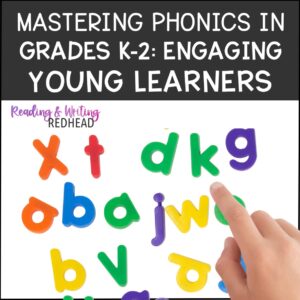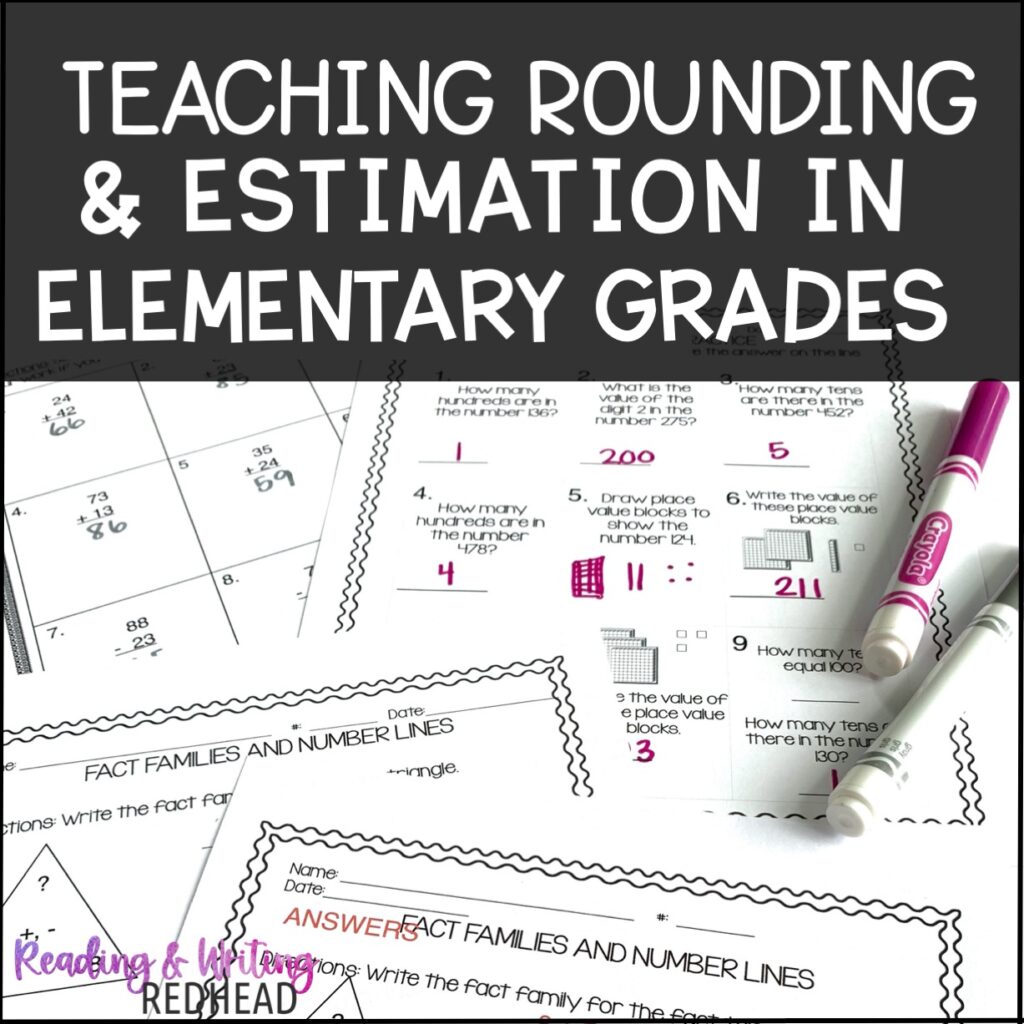
Making Math Approachable: Teaching Rounding and Estimation in Elementary Grades
Rounding and estimation can be tricky concepts for young learners. Many students struggle to understand rounding to the nearest ten or hundred, and applying these skills to real-world situations can be even more challenging.
However, with the right approach, teaching rounding and estimation can be a fun and engaging experience. In this blog post, we will share practical strategies and activities to help your students master these essential math skills.
Teach Place Value First
Make sure your students have a solid understanding of place value. They need to know the difference between ones, tens, hundreds, etc., to round numbers correctly. Try not to breeze past any of these lesson in your math program, and be sure to support students who need help with basic place value before moving on.
Number Lines
Number lines are super helpful to visually represent rounding. It helps students see where a number falls in relation to the nearest ten, hundred, etc. Plus it sets the stage for later when students need to place numbers (and fractions) on number lines. Get them ready for when you start teaching the…
Rules of Rounding
Now let’s get into rounding. Clearly explain the rules:
- If the digit to the right of the place you’re rounding to is 5 or more, round up.
- If the digit to the right is 4 or less, round down.
Make it Visual and Interactive
- Interactive Number Lines: Have students create their own number lines and use them to practice rounding. You can use different colors or markers to make it more engaging.
- Rounding Charts: Create a chart with numbers and have students color-code the numbers that round to the same value.
- Real-Life Examples: Use real-life scenarios to illustrate rounding and estimating. For example, “If a movie ticket costs $9.99, about how much will it cost for 3 people?”
3. Games and Activities
- Rounding Games: Play games like “Rounding Face Off” or “Rounding Concentration” to make learning fun and competitive.
- Estimation Activities: Have students estimate the number of objects in a jar, the length of a room, or the weight of a book.
- Task Cards: Use task cards with different rounding and estimation problems for students to work on individually or in groups.
Ask Open-Ended Questions: Encourage students to explain their reasoning. Ask questions like, “How do you know that number rounds to this value?” or “Can you think of a real-life situation where we might use estimation?”
Error Analysis: Show students examples of common rounding mistakes and ask them to identify and correct the errors. Then have them practice analyzing their own mistakes and maybe even those of peers.
Problem Solving: Give students problems that require them to use both rounding and estimation skills to solve. For example: Travis wants to buy 2 extra lego pieces. Each piece costs 96 cents. About how many dollars will he need to pay for the lego pieces.
Keep reading for more ideas!
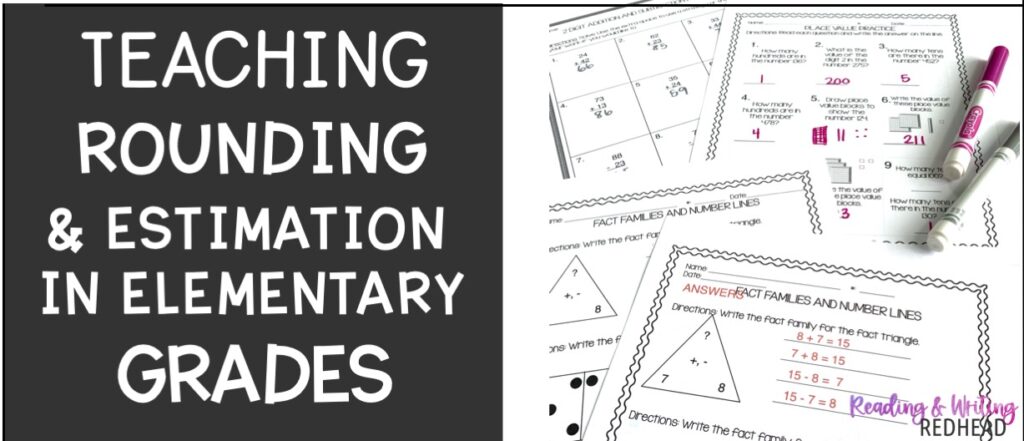
Videos
Videos like this one from Lincoln Learning Solutions can be very helpful! Make sure you watch any videos in advance so you can be sure they are right for your students.
IXL
IF students need more practice, check out the activities at the IXL website.
Here’s an example of how students could practice at IXL. Notice they can also “Learn with an example” or “Watch a video! Also see that (at the bottom) that if. this is too hard, they can choose a slightly easier activity to try, rounding to the nearest hundred.
This is a screenshot from a video students can watch to get more help.
And here is what students might see when they click “learn with an example” on IXL! So helpful!
Ballpark Estimates
Let’s talk about ballpark estimation! If you have Everyday Math as your curriculum, you know it is one of the skills you need to teach. Ballpark estimation is basically teaching rounding numbers and then use those rounded numbers to add or subtract to estimate totals. For help with that, keep reading – the next section has what you need!
Ready to Go Activities from Teachers Pay Teachers
Of course, it would make life easier to have ready-to-use activities from Teachers Pay Teachers to help your students develop their rounding and estimation skills! Well I have made just that to help my own second graders!
This engaging resource helps your students develop a strong understanding of rounding and estimation through fun and interactive activities. Perfect for second and third graders (and even advanced first graders!), this resource includes a variety of activities that can be as math centers, bell ringers, homework, or done together at the teacher table.
Take a look of some of the pages in action below. Plenty of ready to go worksheets you can just print and copy for your students. There are also some cut and paste activities where students basically have to self-check their work, because if they don’t see a matching answer, they probably estimated incorrectly and need to go back and do the math again. Also, it sneaks in some fine motor practice with the cut and gluing.
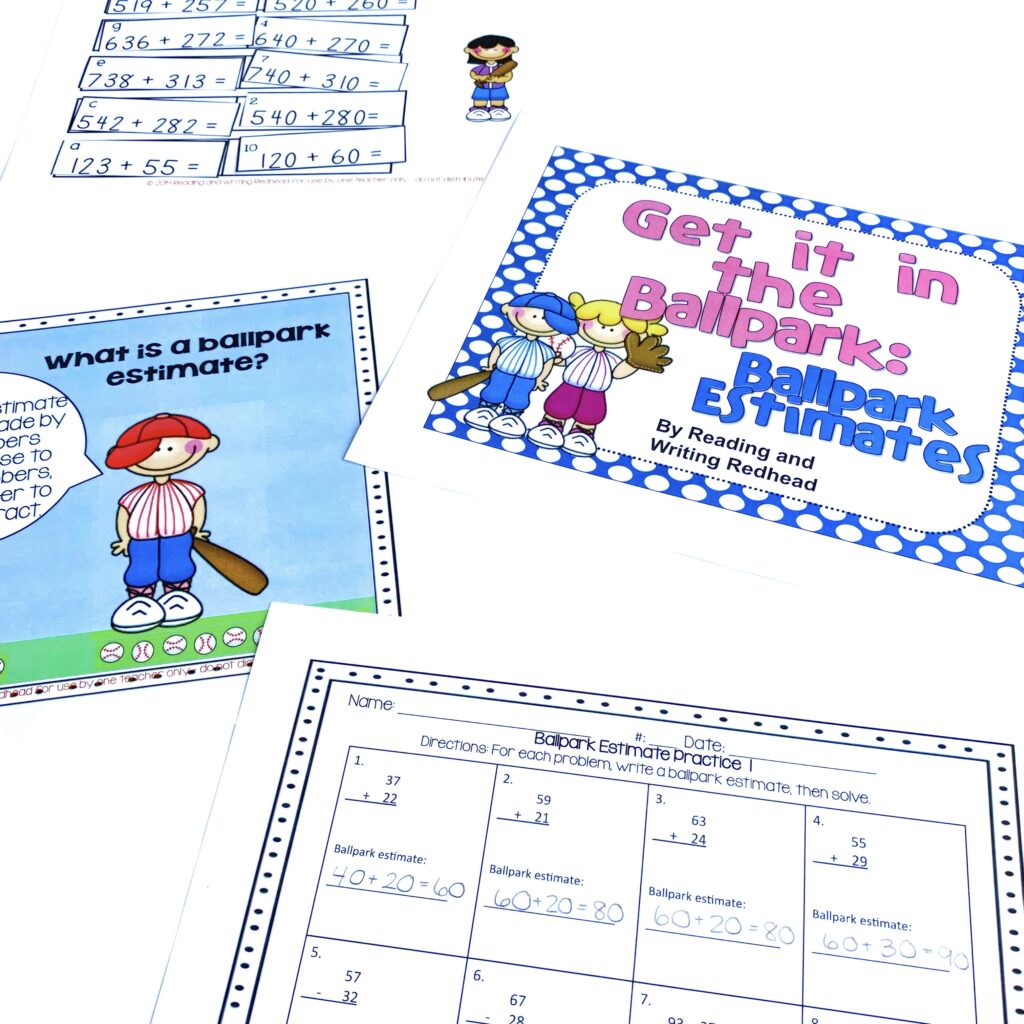

I recently updated this resource with a new font. Here’s an example of the mini poster that explains ballpark estimates and a couple of the pages in the newer, cleaner style.
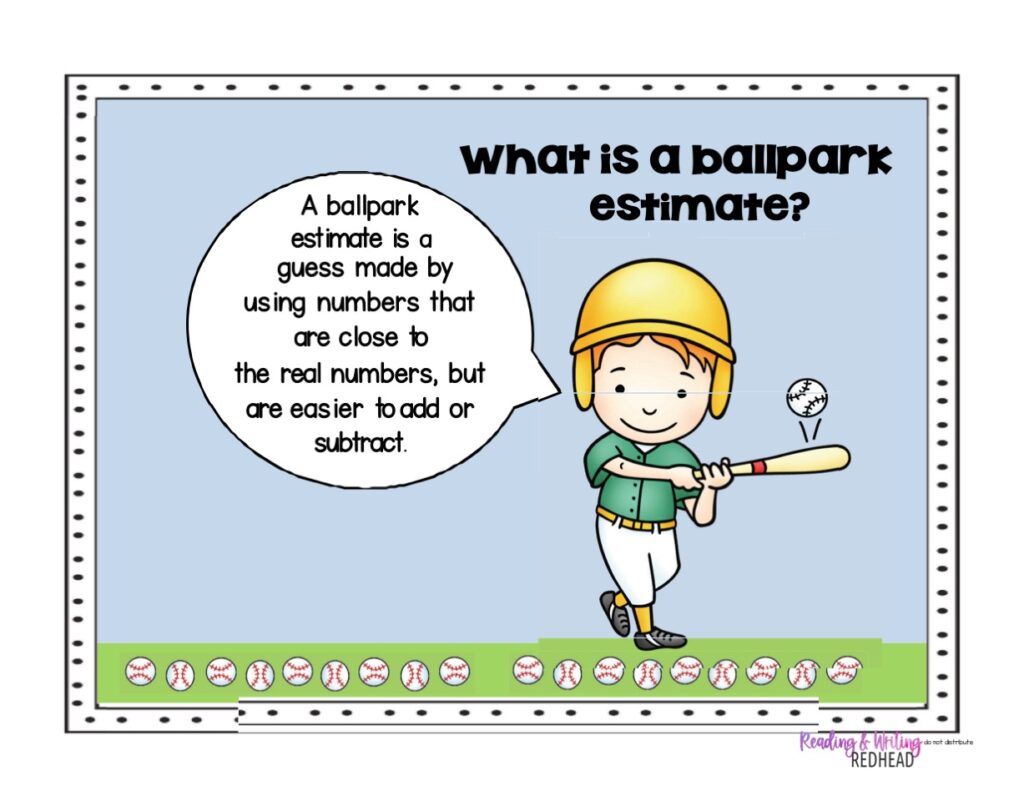
With clear instructions and engaging practice, your students will be estimating like pros in no time! Download today and make math more approachable for your class.
I always read a few reviews before deciding to buy anything, so here are a few 5 star Teachers Pay Teachers to get you started.
“My students enjoyed working on these estimating pages. They thought it was so fun and engaging. Plus, it gave them extra practice when it came to estimating!”
“LOVED this activity. We did it in math stations and it was so helpful!”
“I really like the theme of this activity. By relating ballpark estimate to baseball, many of my students were able to grasp estimating better.”
Other blog posts you may want to check out:
- Hands on Geometry Tips to Support All Learners
- Transform Your Teaching with Self-Grading Digital Assessments
- 8 Effective Beginning Multiplication Activities
- 5 Ways to Boost Math Skills with Fidget Poppers
- Tips for Reviewing Math Skills
If you want to save this blog post for later, pin this Pinterest ready image below!
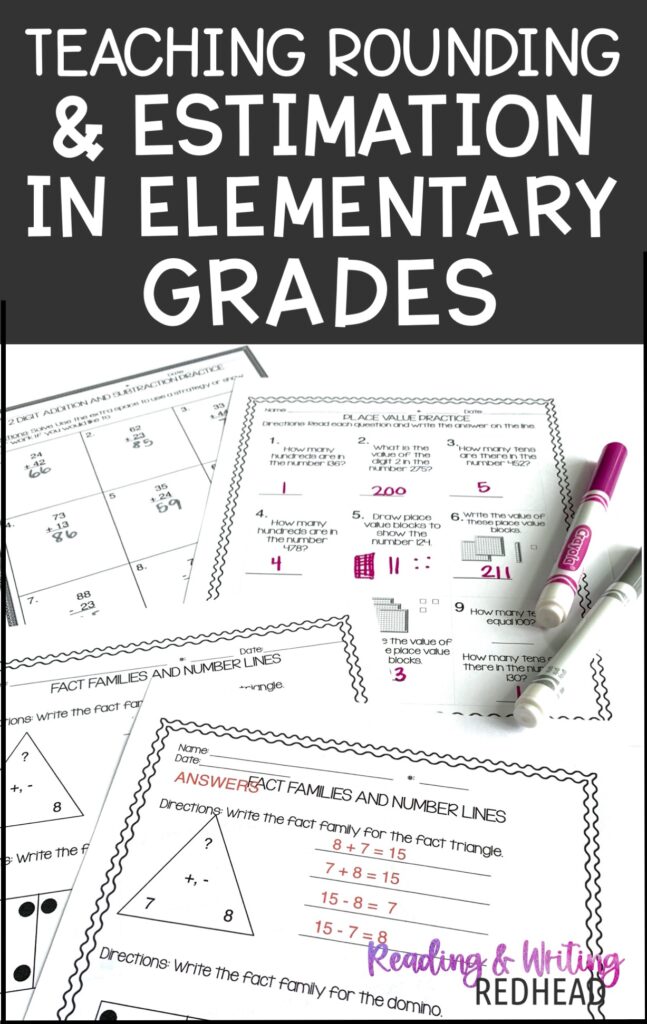
Let me know if you have any other writing suggestions or resources to add!





